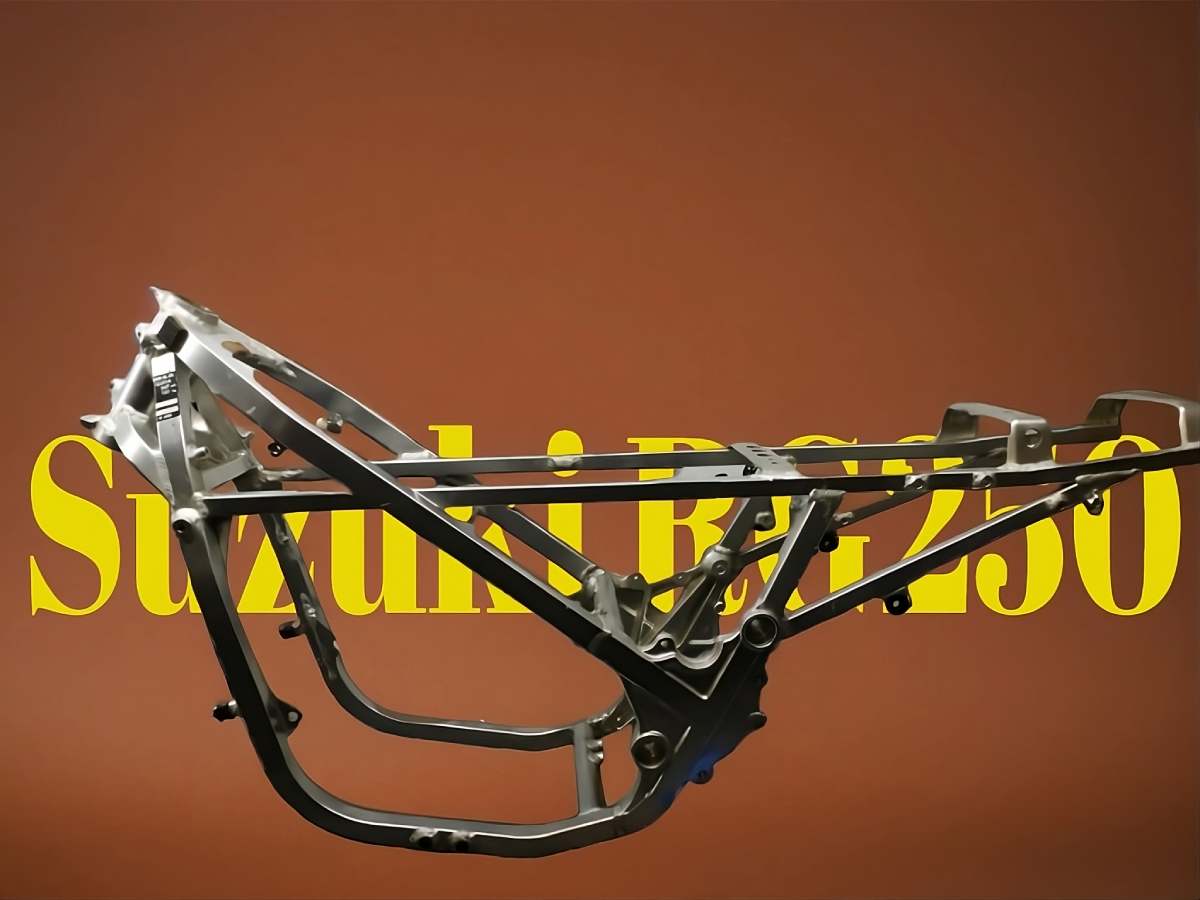- Posted on
- • History
How RG250 Aluminum Frames Shape Modern Bike Builds
- Author
-
-

- User
- Torque
- Posts by this author
- Posts by this author
-

Aluminum frames in RG250 influencing modern builds
or, how a square-pipe skeleton from 1983 keeps sneaking into 2025 CAD files
1. Intro – the first time I saw the ghost
I was elbow-deep in a 2024 café-racer forum thread when someone posted a side-by-side: left frame, a brand-new aluminum twin-spar from a boutique builder in Barcelona; right frame, a battered 1983 RG250 Gamma jig. The weld beads lined up like cousins at a reunion. The caption simply read, “still stealing from Suzuki.” I laughed, then opened SolidWorks and realised the joke wasn’t really a joke.
2. History – a quick rewind with scuffed knees
Suzuki had just finished embarrassing bigger factories on Grand Prix Sundays and decided the buying public deserved the leftovers. They rolled out the RG250 Gamma: 45 horsepower, 131 kg wet, and—here’s the kicker—the first mass-produced square-section aluminum frame . Before that, aluminum lived in hand-built racers or Swiss cheese experimental bikes. The Gamma’s box beams looked crude under fluorescent light, but on the dyno the chassis flexed just enough to keep the two-stroke twin from rattling fillings loose.
3. Details – why the old box still matters
Section shape:
40 mm x 40 mm extrusions, wall thickness 2.8 mm—thick enough to shrug off kerb kisses, thin enough to save roughly 4 kg over the steel cradle it replaced.
Triangulation trick:
straight tubes meet at cast-aluminum nodes, copying race practice but welded on a production line. The joints look industrial until you notice the scallops—tiny reliefs that stop stress cracks before breakfast.
Engine as skeleton:
the twin bolts solidly to the frame rails, acting as a stressed member. Modern naked bikes call this “mass centralisation”; in 1983 it was just “we ran out of tubing.”
Flex window:
measured in a university lab in 1986, the frame twists 1.8 degrees under 1 000 N-m—perfect for letting the rear tyre follow camber without the rider feeling seasick.
4. Specifications – then versus now (because numbers talk louder than nostalgia)
| Item | RG250 Gamma (1983) | 2025 “RG-inspired” custom twin-spar |
|---|---|---|
| Alloy | 6061-T6 extrusions | 7020-T6 hydroformed |
| Wall thickness | 2.8 mm | 2.1 mm (variable) |
| Frame weight | 8.9 kg | 7.4 kg |
| Rigidity (lateral) | 1 250 N/mm | 1 410 N/mm |
| Engine mounting | Four hard points | Three hard points + compliant bush |
| Manufacturing | MIG welded, hand-finished | Robot TIG + local hand blending |
| Finish | Raw aluminium + clear coat | Shot-peened + dark anodise |
5. How the 1983 DNA keeps slipping into 2025 builds
a. Café-racer revival
London shops laser-scan the original Gamma frame, then CNC-bend 7020 tubing into near-identical geometry. The welds are prettier, but the weld sequence (rear hoop last, headstock first) is lifted straight from the Suzuki shop manual.
b. Electric swaps
Battery packs crave a stiff box. Start-ups discovered the Gamma’s square rails cradle a 6 kWh brick like it was born for the job. One builder in Portland admitted he scaled the RG frame 112 %, printed it in titanium, and shaved another kilo—then nervously asked if anyone would notice the theft.
c. 3-D printed lattices
The latest trick is slicing the old box into honeycomb infill. The lattice keeps torsional stiffness, dumps 30 % mass, and still carries the same load paths Suzuki sketched on a chalkboard forty-two years ago.
6. Pros / Cons – told by someone who has welded both eras
| Pros | Cons |
|---|---|
| Template proven – crash data already exists, no guessing games | Narrow window – copy too closely and you inherit 1983 flex limits |
| Light for its day – still embarrasses some modern steel designs | Welding skill – thin-wall aluminum punishes sloppy heat control |
| Iconic silhouette – café crowd pays premium for the boxy look | Packaging clash – modern ABS pumps and ABS rings fight for the same real estate Suzuki left for carburetors |
7. Last kick
Every time I walk past a custom bike show and spot a twin-spar that looks suspiciously familiar, I tap the top tube and feel the faint ridge left by the original Gamma jig. The builders swear they redesigned from scratch, but the shadow of 1983 is still there—square, stubborn, and quietly teaching 2025 how to stay light without snapping in half.
